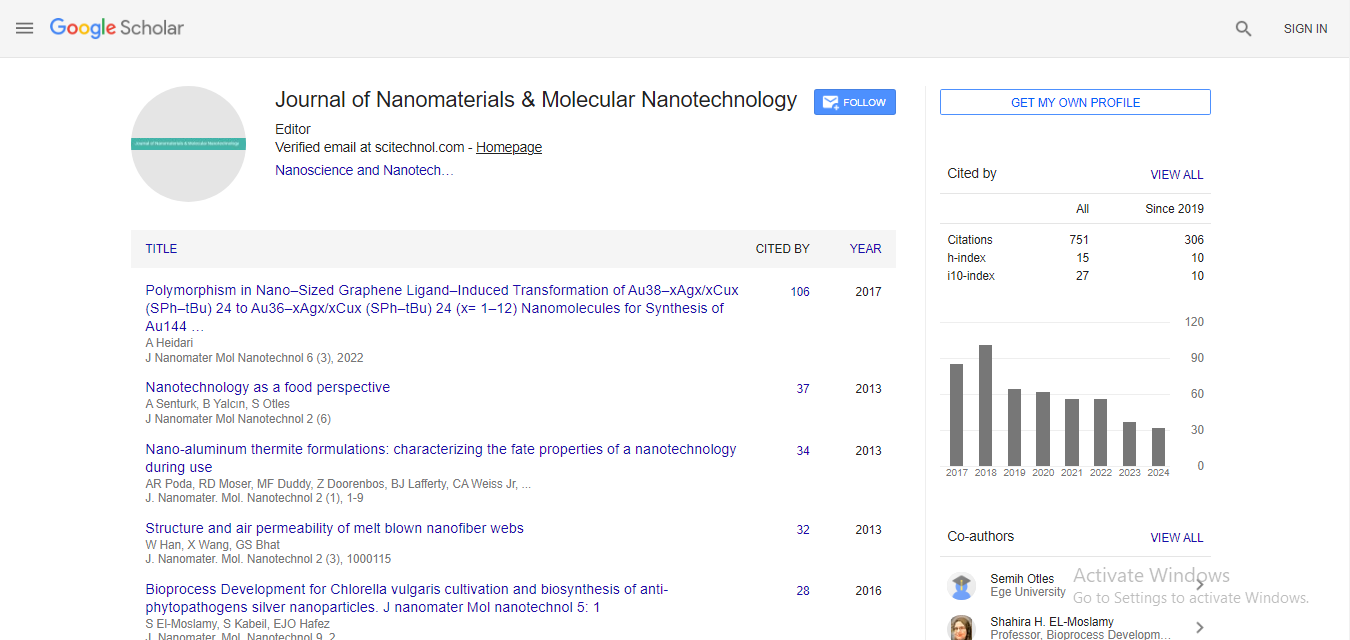Synthesis of high quality graphene oxide by chemical oxidation methods
R Al-Gaashani
QEERI - Hamad Bin Khalifa University, Qatar
: J Nanomater Mol Nanotechnol
Abstract
High quality graphene oxide (GO) has been synthesized by oxidation of graphite via two safe modified chemical methods using a mixture of sulphuric acid (H2SO4), phosphoric acid (H3PO4) and nitric acid (HNO3) as intercalating agents. Potassium permanganate (KMnO4) and hydrogen peroxide (H2O2) have been used as oxidizing agents. In this study the production of dangerously explosive gases were avoided. The temperature was carefully controlled with the use of ice baths, ensuring the temperature was kept at a minimum during the reaction. The prepared samples have been extensively studied and compared using various techniques including scanning electron microscopy (SEM), electron dispersive spectroscopy (EDS), high resolution transmission electron microscopy (HRTEM), Fourier transform infrared (FT-IR), x-ray photoelectron spectroscopy (XPS), and UV-vis spectroscopy. The results indicated a higher presence of oxygen containing groups and an increase in the C/O ratio, both of which serve as reliable indicators of high quality graphene oxide. One of the most important issues regarding producing large quantities of GO is the safety aspects of the method. Indeed the traditional Hummers method has the inherent risk of explosion due to the buildup of manganese heptoxide (Mn2O7). Despite attempts to reduce the temperature of the reaction vessel the control of the temperature throughout the experiment has proven troublesome and impractical. Other studies have trailed the production of GO by means where no toxic gases were produced. Namely, Marcano et al., 2010 added double the mass of KMnO4 whilst using a combination of sulphuric and phosphoric acid in a 9:1 ratio. However, the rapid temperature increase was not addressed in this study and therefore the need for a safer and temperature controlled method remains of utmost importance when producing GO. It is also worth noting that lower temperature has been implicated in producing GO with lower defect.
Biography
E-mail: ralgaashani@hbku.edu.qa
 Spanish
Spanish  Chinese
Chinese  Russian
Russian  German
German  French
French  Japanese
Japanese  Portuguese
Portuguese  Hindi
Hindi 



